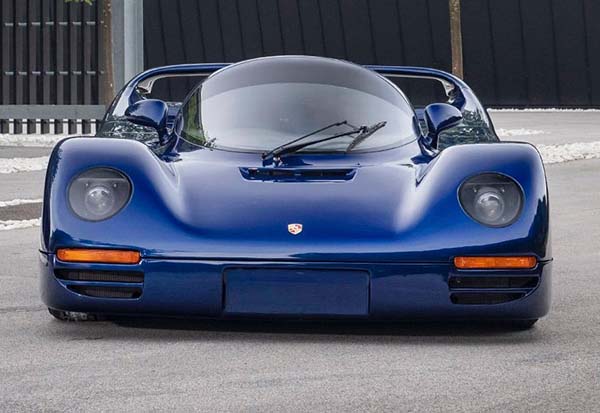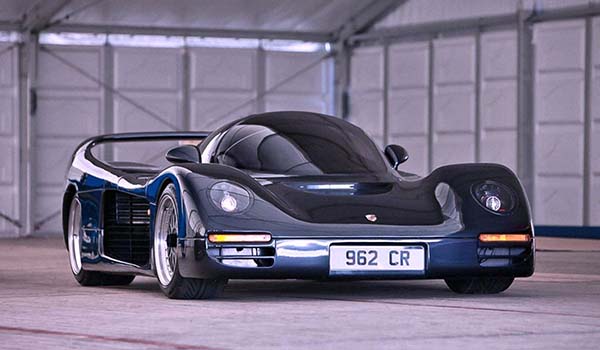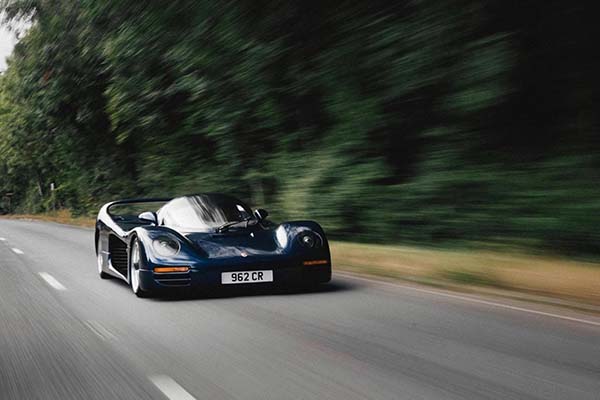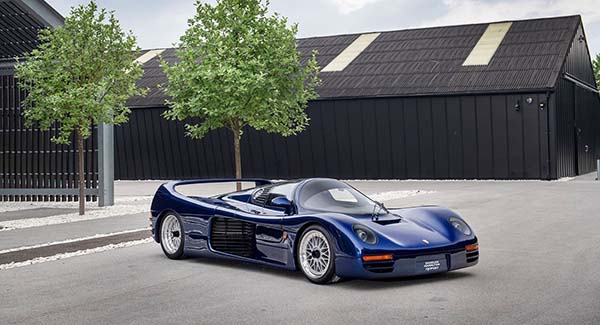When Group C goes road: The Schuppan 962R
Turning a race car into a road car is not easy. Just ask Vern Schuppan, former racing driver and team boss, who built one of the first hypercars and based it on the Porsche 962 endurance racer.
Using Porsche’s tried and trusted Group C racing car was a good move, especially as Schuppan already had very close relations with the German manufacturer. Australian Schuppan had won the Le Mans 24 Hours race in 1983 at the wheel of a Porsche 935 and he went on to run cars in several series, including the World Sports Prototype, IMSA in the US, and the All Japan Sports Prototype Championship. It was the latter of these categories that proved the catalyst to building his own road car.

Vern had become very well known in Japan through motorsport and a conglomerate from the country put together the finance to fund the Vern Schuppan Ltd (VSL) 962CR road car. New premises were established in High Wycombe in the UK, along with an impressive list of race team engineers and management to oversee the project, which got fully underway in 1992 following testing of a prototype in 1991.
Fellow Australian Mike Simcoe was brought onboard to style this new hypercar, which had the aim of remaining as close to the Porsche race car as possible while being fully usable on the road. Simcoe came up with a swoopy body shape that kept the style of the 962’s centre section but with a much more rounded look to the front and rear. There was also a large upswept wing incorporated into the body rather than the more functional rear wing of the original Porsche.

How many Schuppan 962CRs were built has been a topic of much debate over the years. To complicate matters, there were also Schuppans made with the same bodywork as the factory Porsche race car, which were designated as LM models rather than CR. Trevor Crisp who worked for Vern throughout this period has worked out there were eight cars made at the factory, four with an LM designation and four as CRs. A further chassis was sold unbuilt and was subsequently used to complete a Dauer LM, another separate effort to build a roadgoing Porsche 962.
The base for the Schuppan 962 was a carbon fibre chassis made by race team Reynard. This was fitted with much the same suspension and brakes as a 962 race car and the LM versions received a 2.65-litre flat-six Porsche engine with twin turbos and 630bhp. For the CR, a 3.4-litre engine was used with 600bhp, but the engine could produce up to 800bhp when the turbo’s boost was wound right up. Both drove through the Porsche 962’s five-speed manual gearbox.

VSL produced a brochure for prospective buyers that quoted a top speed for the 962CR of “more than 215mph” and there were claims the car could hit 251mph in its most potent form. It was enough for the company to state the CR was the world’s fastest roadgoing sportscar at the time, though McLaren was set to put that in the shade when its F1 hit a verified 231mph that later increased to 240mph. No 0-60mph time was officially quoted by VSL for the CR, but it was reckoned to be around 3.5 seconds.
Those numbers put the Schuppan comfortably in the hypercar club alongside the Ferrari F40, Jaguar XJ220, Porsche 959, and perhaps the car closest in design ethos, the Jaguar-Sport XJR-15. Where Vern Schuppan’s car outdid them all, however, was in rarity. There was a plan to build a total of 50 962CRs, but this fell apart when a perfect storm of global recession and the collapse of the Japanese economy caused the company’s backers to pull out.
Their agreement to take 50 cars was first reduced to 20, then 10. This made production of the £1.265 million 962CR impossible to justify on financial grounds and Vern Schuppan Ltd went into administration, leaving a handful of cars and a lot of what ifs. What is clear is that Schuppan had put a huge amount of work into making the 962CR a fully viable road car. The engine may have been built by Andial, Porsche’s North American Motorsport representative, but the car came with catalytic converters and purpose-designed ignition system to meet the most stringent emission regulations. This meant the 962CR could be driven in California, where many of its rivals could not.

Its race-bred design also meant the 962CR was much easier to maintain than most competitors. Endurance racing cars must be simple to fix and repair during long events, which means all the major components are easy to get at under the large front and rear body sections. Mike Simcoe stayed with this practical approach for his bodywork design.
Inside, it was a different story. A Porsche 962 race car was only ever intended to carry its driver, but the Schuppan 962CR came with two seats to qualify as a sports car. The CR’s chassis was 2-inches wider than a standard Porsche’s or the Schuppan LM, which afforded a little more cabin space. However, it was still very intimate inside the 962CR and there wasn’t much in the way of creature comforts, though air conditioning was listed as standard equipment. You also got race-spec digital readouts in addition to the usual analogue dials, and a plumbed-in fire extinguisher system.
In a final twist of fate for the Schuppan 962CR, the company tried to enter one for the 1994 Le Mans 24 Hours race, taking a race car that had been turned into a road car and converting it back. It was hoped this might raise awareness and money to continue production, but the organisers of the French race were having none of it and the 962CR was refused entry.
It was a sad end for a car that had all the right ingredients to challenge the McLaren F1 and others that followed, like the Ferrari F50 and Mercedes CLK GTR. Yet Vern Schuppan did turn a race car into a road car, it was just turning this into a profit that proved too difficult.

COMMENT